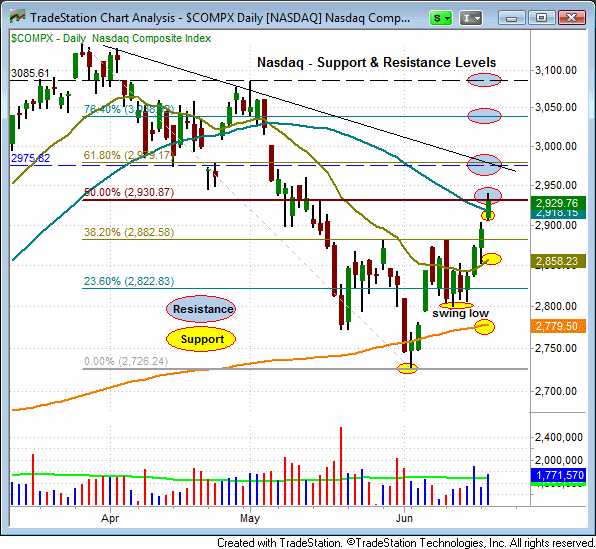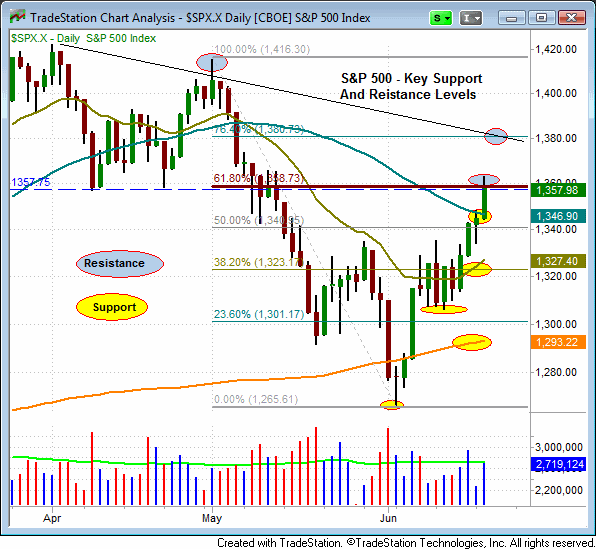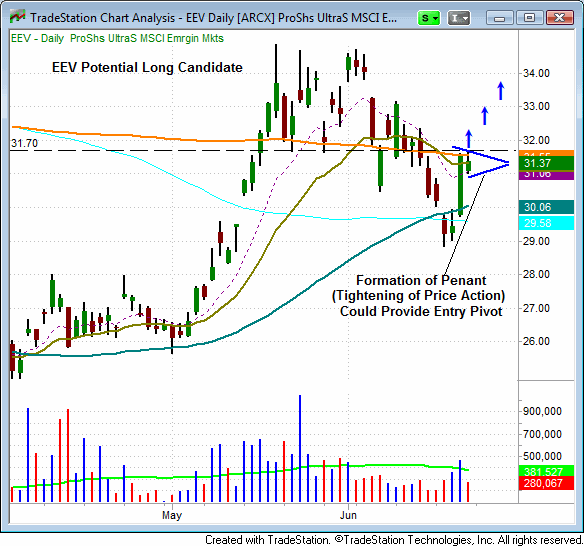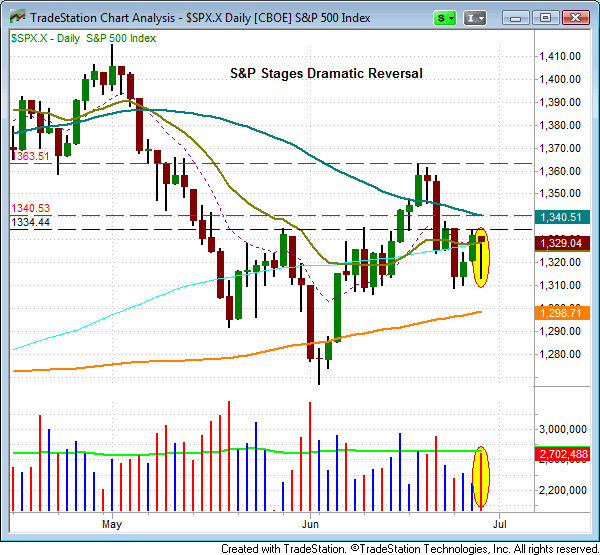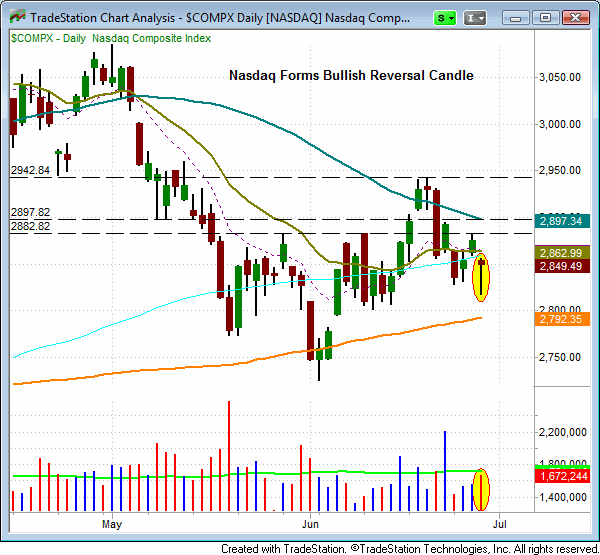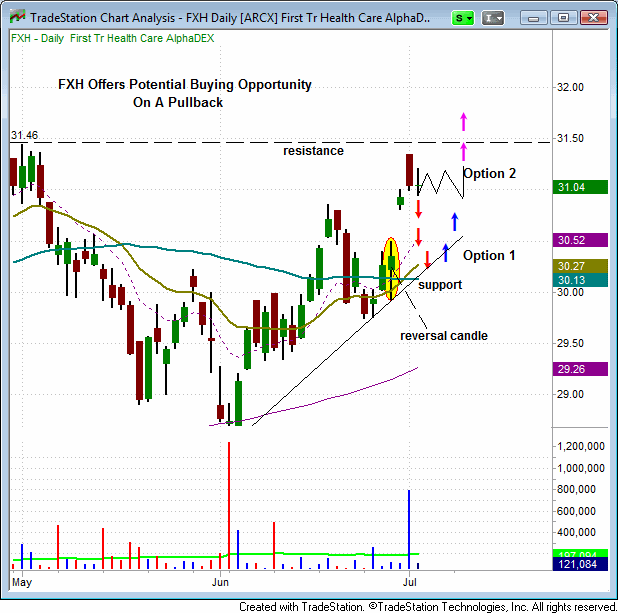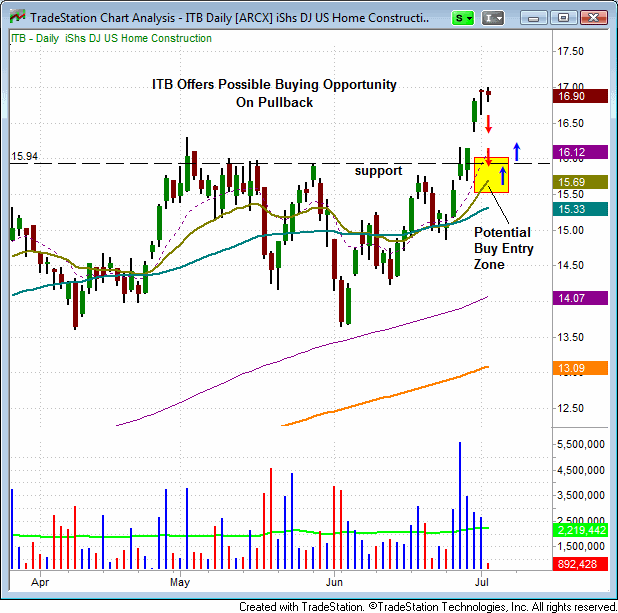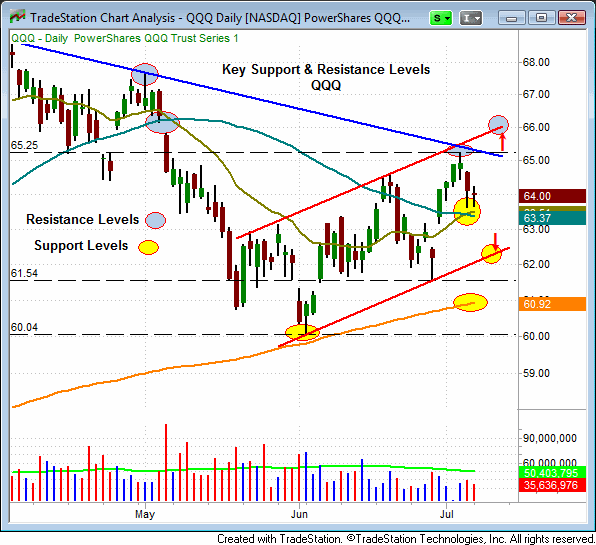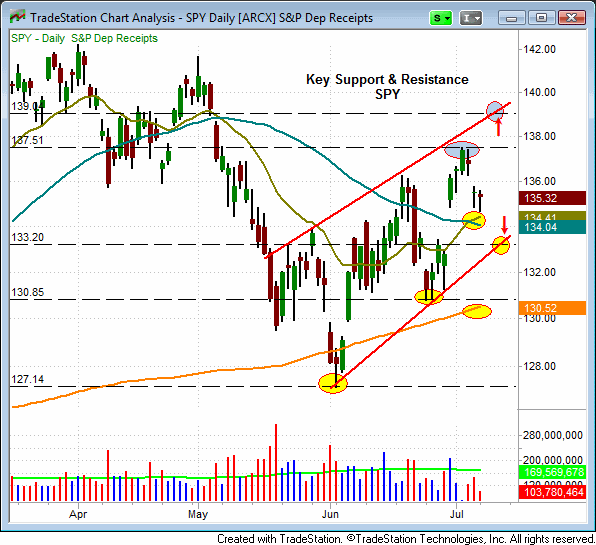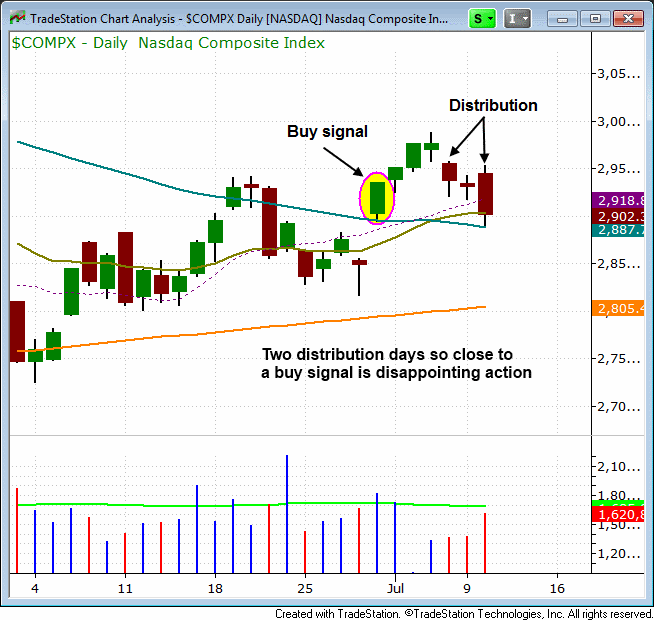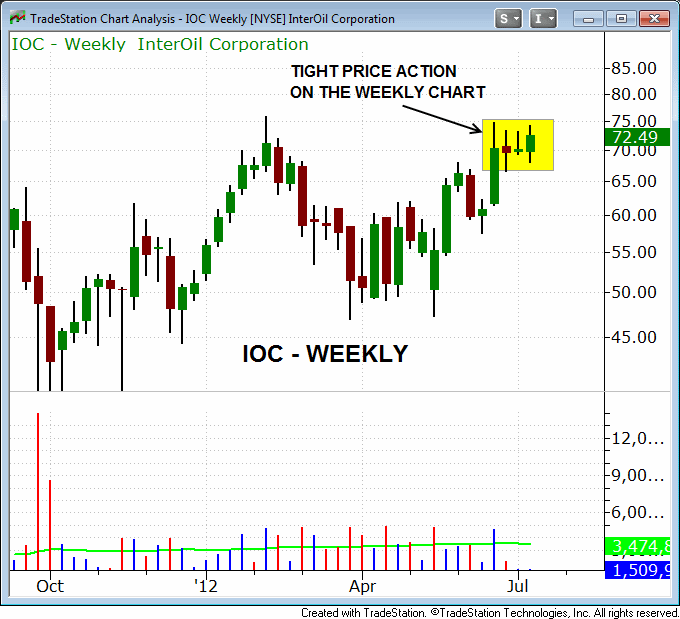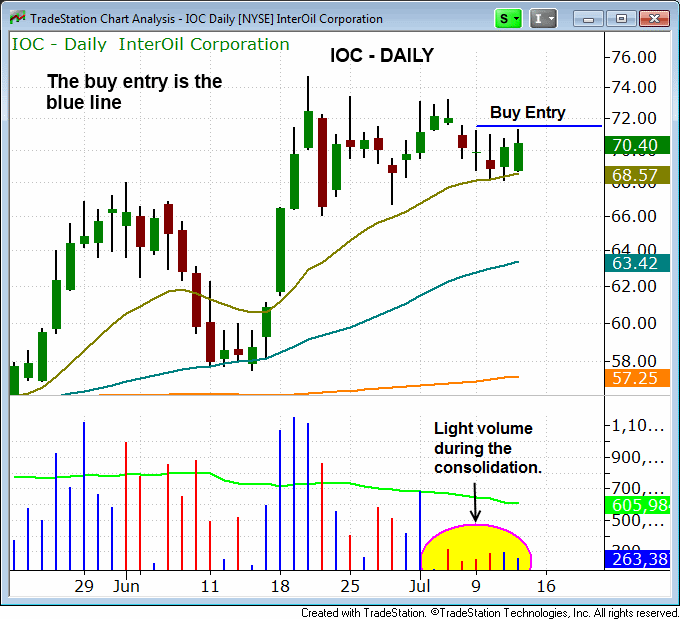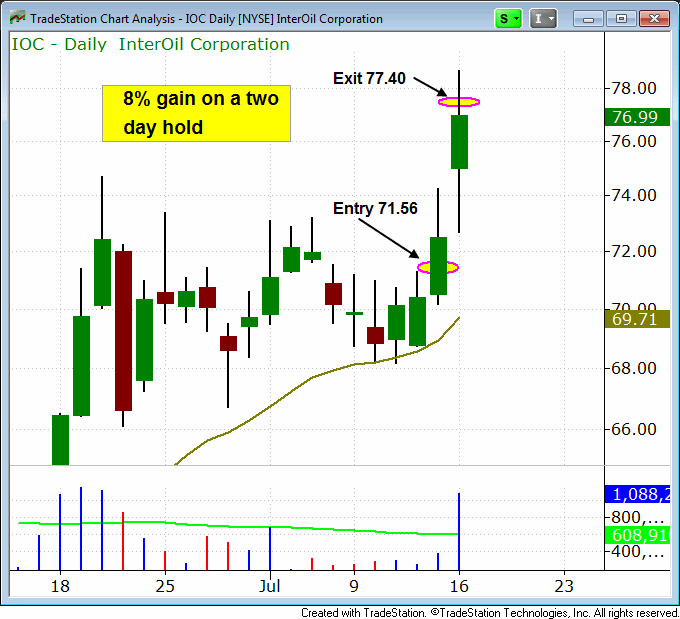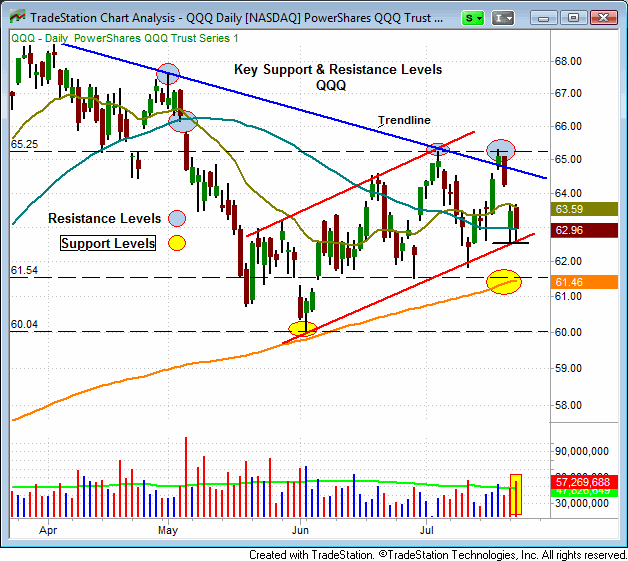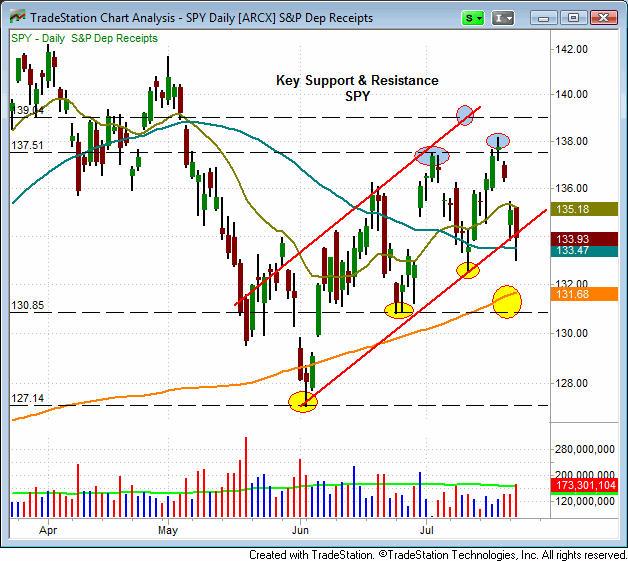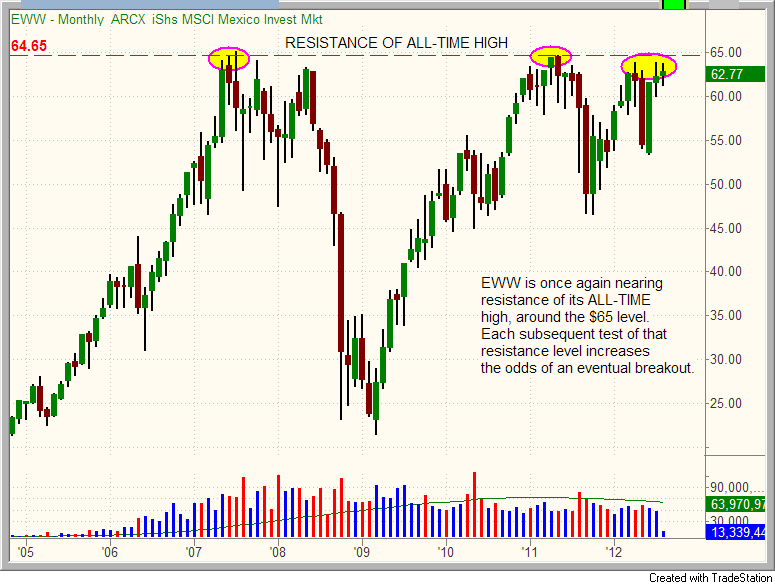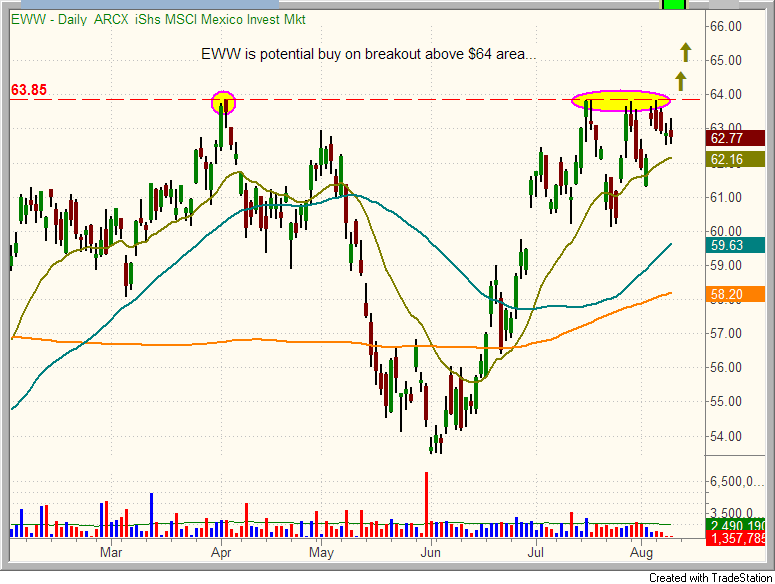morpheustrading
Active member
- Messages
- 166
- Likes
- 3
Two "short ETFs" on my watchlist for potential swing trade entry today
Over the past four days, we have been tracking the inversely correlated ProShares UltraShort Oil and Gas ETF ($DUG) for a possible long entry on pullback into the 20-day and 200-day moving averages. Yesterday, DUG formed the reversal candle we were looking for, as a possible pivot for a buy entry. As a result, we have now placed DUG on today's watchlist for potential swing trade entry. Note that if DUG triggers our buy entry price, it will be entered as a very short-term trade (2 to 5 days) because inverse and leveraged ETFs underperform their underlying indexes as the holding time increases. The daily chart below illustrates the "undercut" with reversal bar we were anticipating:
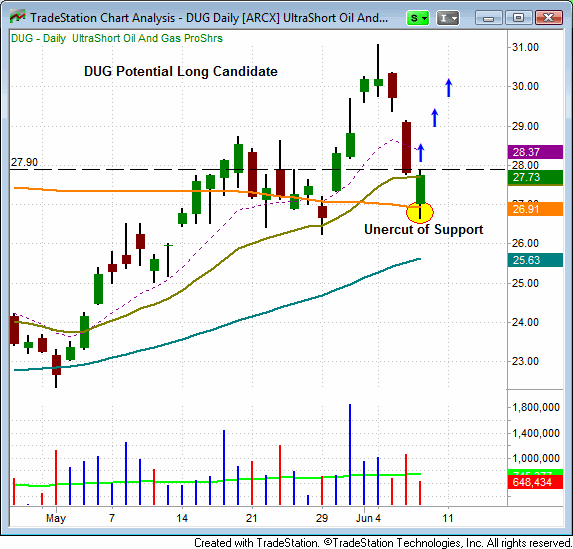
Yesterday, on a spike in volume, the Direxion Financial Bear 3x ETF ($FAZ) formed a bullish reversal candle. After undercutting support of its 20-day EMA, FAZ rallied sharply and closed at session highs. FAZ now offers a potential long entry just above yesterday's high of $26.99. We are also placing this inversely correlated "short ETF" on today's watchlist as well:
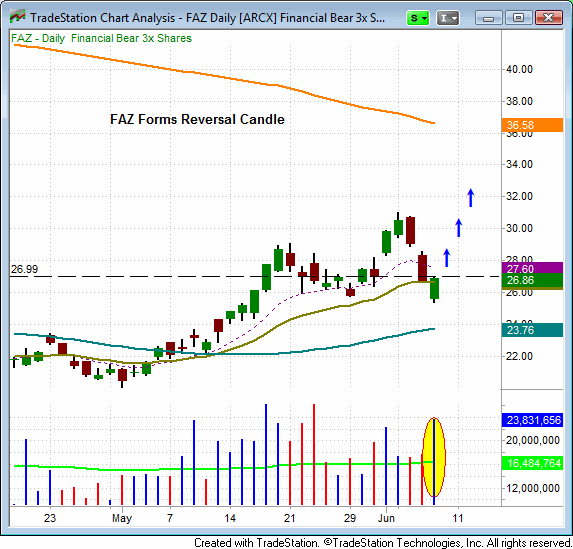
Several days ago, we exited and took profits on our remaining short positions because the main stock market indexes had finally undercut their 200-day moving averages and formed reversal candles (as we anticipated and discussed in our June 4 ETF commmentary earlier in this thread). With the undercut and reversal candles in place, the odds favored that we would see a bounce in the broad market. Consequently, we suggested patience by sitting in a cash position as the broad markt bounced and to wait for new ETF and stock trade setups to develop. Yesterday, all of the major indices put in reversal candles and there are now a plethora of potential short entry setups in the market. As we've often discussed in the past, it's important to wait for proper technical trading setups to develop; otherwise there is a high likelihood of overtrading and churning one's trading account. This is where the short-term element of our market timing system keeps us out of trouble by being on the right side of the market, or at times being fully in cash.
Over the past four days, we have been tracking the inversely correlated ProShares UltraShort Oil and Gas ETF ($DUG) for a possible long entry on pullback into the 20-day and 200-day moving averages. Yesterday, DUG formed the reversal candle we were looking for, as a possible pivot for a buy entry. As a result, we have now placed DUG on today's watchlist for potential swing trade entry. Note that if DUG triggers our buy entry price, it will be entered as a very short-term trade (2 to 5 days) because inverse and leveraged ETFs underperform their underlying indexes as the holding time increases. The daily chart below illustrates the "undercut" with reversal bar we were anticipating:

Yesterday, on a spike in volume, the Direxion Financial Bear 3x ETF ($FAZ) formed a bullish reversal candle. After undercutting support of its 20-day EMA, FAZ rallied sharply and closed at session highs. FAZ now offers a potential long entry just above yesterday's high of $26.99. We are also placing this inversely correlated "short ETF" on today's watchlist as well:

Several days ago, we exited and took profits on our remaining short positions because the main stock market indexes had finally undercut their 200-day moving averages and formed reversal candles (as we anticipated and discussed in our June 4 ETF commmentary earlier in this thread). With the undercut and reversal candles in place, the odds favored that we would see a bounce in the broad market. Consequently, we suggested patience by sitting in a cash position as the broad markt bounced and to wait for new ETF and stock trade setups to develop. Yesterday, all of the major indices put in reversal candles and there are now a plethora of potential short entry setups in the market. As we've often discussed in the past, it's important to wait for proper technical trading setups to develop; otherwise there is a high likelihood of overtrading and churning one's trading account. This is where the short-term element of our market timing system keeps us out of trouble by being on the right side of the market, or at times being fully in cash.

